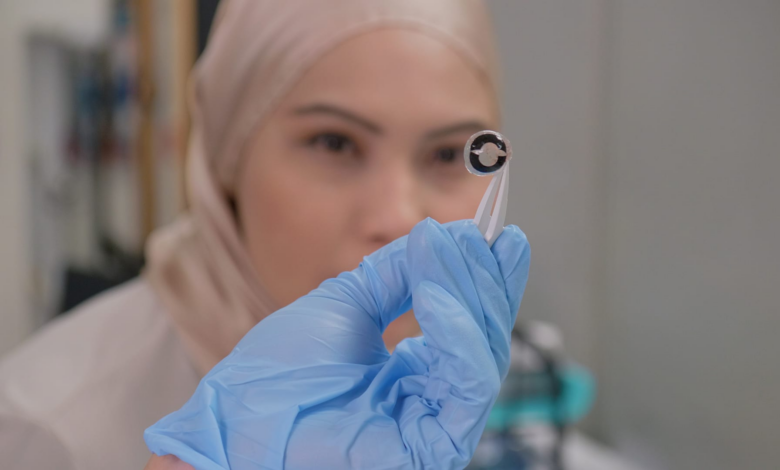Scientists develop ultra-thin batteries that can be charged with tears


Scientist Lee Seok Woo said a scene from the movie “Mission Impossible” inspired his latest invention: a battery for smart contact lenses.
In the fourth film of the series, an agent wears contact lenses capable of facial recognition and eye tracking. Lee wanted to make that lens a reality.
“I was thinking, ‘How can I work in this field of smart contact lenses?'” an associate professor in Nanyang Technological University’s School of Electrical and Electronics Engineering told CNBC’s “The Edge.” .
Lee’s expertise in battery components served as the starting point for his foray into wearable technology. He realized that smart contact lenses would need compact and safe batteries, which was important to promote the development of these devices.
The contact lenses themselves are extremely thin, just 0.5 mm, so the size and flexibility of these batteries are key to keeping users from feeling uncomfortable.
“Our battery thickness is about 0.2 mm, twice the thickness of a human hair,” Lee said.
Demonstration of how smart contact lenses would fit a human eye model.
Lauren Choo | CNBC
Lee and his team have invented a battery that can be powered by a biocompatible salt solution as an alternative to lithium-ion batteries containing flammable materials.
This new battery can be charged using the conventional wire method or the chemical method. The battery is coated with glucose and when dipped in a salt solution, the glucose reacts with sodium and chloride ions to charge.
Scientists at Singapore’s NTU demonstrate how to charge the battery on smart contact lenses using the conventional wire method.
Lauren Choo | CNBC
After eight hours of chemical charging, the battery can reach 80% of its maximum capacity. It can then be used for several hours during the day.
However, there is an unusual way to power the battery.
“Tear solution also contains glucose,” Lee said. That means when you wear contact lenses, your tears can also charge the battery.”
“If you cry more, you can charge your batteries more.”
A scientist introduces smart contact lenses equipped with a prototype that operates on a micro-battery.
Lauren Choo | CNBC
Currently, the capacity and voltage of the battery are still very low. Using both methods, the battery can only produce a voltage of about 0.3V – 0.6V. The standard voltage for an AA battery is 1.5V.
At this stage, that output is not enough to power data storage or Internet connectivity, but the team is working to develop battery specifications.
One potential partner Lee has identified is in the healthcare sector.
“We use glucose as biofuel. There are many diabetics who check their glucose levels every day,” Lee said.
“We investigated how we could detect glucose levels while the user is wearing contact lenses.”
Despite the potential promise of such innovation, Lee believes costs should be kept low considering the battery capacity.
“Once it is seriously commercialized, the cost of the battery will be only a few dollars.”




